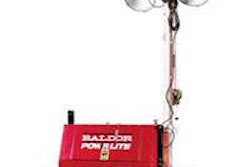Where we are now
 By Kirk Landers
By Kirk Landers
Last month, as all eyes were on the economic stimulus package being worked on by Congress and the incoming Obama Administration, Ken Orski published a summary of what the National Surface Transportation Infrastructure Financing Commission will offer in its final report to Congress in his Innovation Briefs newsletter.
The findings presented by Orski suggest that this commission’s report may be even more important to the highway infrastructure debate in America than the report filed last year by its sister commission, which performed an assessment of the country’s road and bridge needs.
Focused just on financing, the NSTIFC has spent some 20 months investigating and debating funding options for the national highway program. The committee is comprised of a full spectrum of political and industry interests. Its challenge is to find a consensus on how to solve the country’s growing problems with inadequate roads and bridges.
Perhaps the commission’s most important contribution to the debate over America’s roads is its position on alternative funding methods for the federal program.
The switch to more fuel-efficient vehicles last year when gas and diesel prices sky rocketed brought into question the long-term viability of the fuel tax as a primary funding mechanism for the road program. The Bush Administration and other conservative political interests used this argument to oppose a fuel tax increase, proposing instead a shift to other revenue sources.
The commission reportedly will advise Congress that the future is a system in which motorists pay a vehicle-miles-traveled (VMT) charge, rather than a fuel tax. But the commission also will advise that such a system is one or two federal highway bills into the future.
For the short term — the program due to be enacted this fall, and perhaps the next highway bill after that — the commission will recommend expanding public-private initiatives, especially tolling, and a fuel tax increase of 10 cents-per-gallon on gasoline and 15 cents-per-gallon on diesel.
While the revenues generated by the new fuel taxes would fall well short of what many experts say the country needs to invest in its roads, they would add $20 billion a year to the federal program — a tremendous boost, even taking into account the run-up in materials prices over the past two years.
More importantly, the commission’s recommendations provide a bi-partisan agreement of experts that the fuel tax remains for now the single most important source of highway revenue, and that it must be increased in the next transportation act.
Also vital is the commission’s endorsement of VMT as the future — not current — basis for the user fees that support the construction and maintenance of our roads and bridges. This is vital because it establishes the need to begin the transition — presumably with funding for the development of the needed technology — and because it takes VMT off the table as an excuse to avoid dealing with today’s funding issues.











